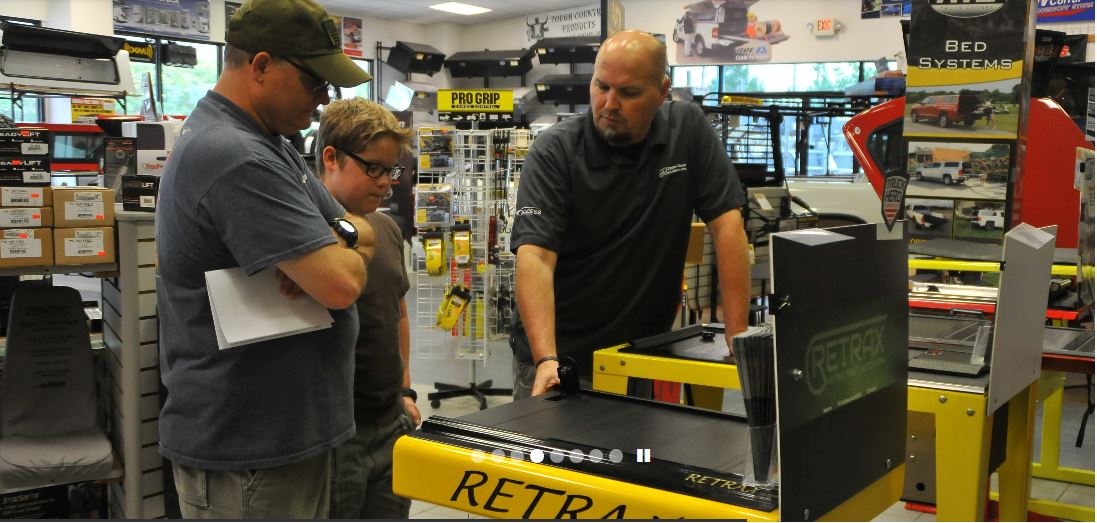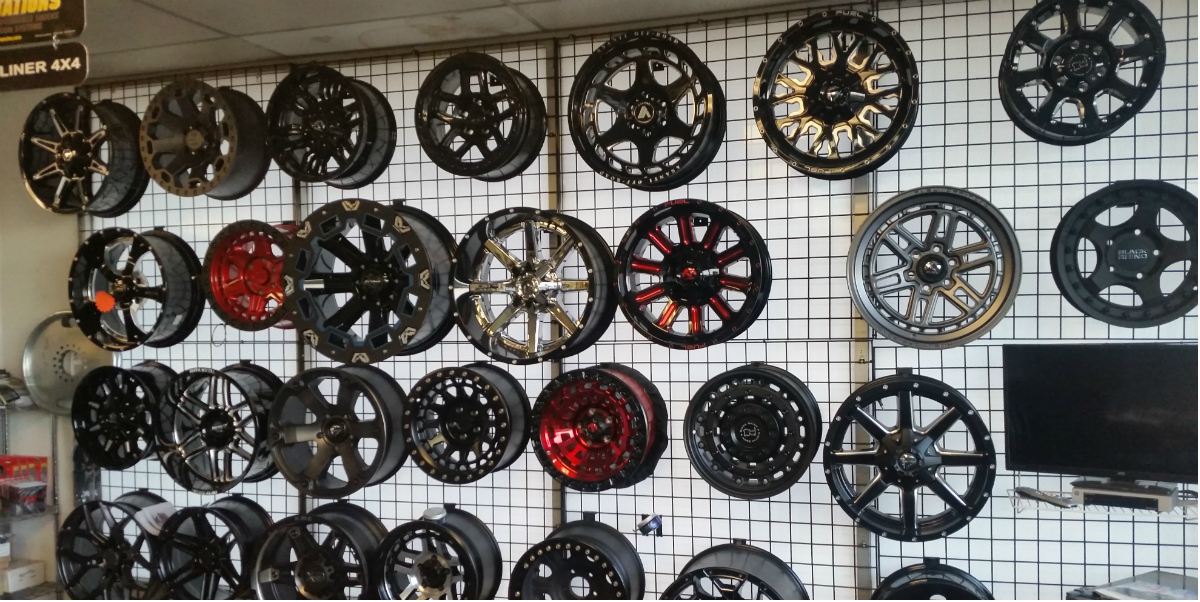The ABCs of Merchandising

As discussed in Fear & Loathing E-commerce? Combine a Memorable In-Shop Experience with These Online Solutions, “A retailer’s goal is to extend further than the base transaction and elicit a response, an emotion. The element of wonder, anticipation and enthusiasm, no matter the industry, is best achieved by creating a destination-inspired theme.”
To do so, retailers must hook consumers to engage in the full experience. This article addresses effective merchandising techniques-from incorporating proper use of lighting, music, scent, color and directional signage to product segmentation, display and demonstration, as well as aisle presentation. Together, these elements ignite the senses, influence consumer perspective and convert window shopping to actual sales.
About This Sponsored Content
If free shipping, easy transaction processing and connecting with customers at the right point in their purchase cycle is tripping up your ecommerce strategy, visit partsvia.com to see how Keystone Automotive Operations can help grow your business by driving more customers to your location.
The following industry professionals offered valuable insight about the topic: Harneet Kaur, Marketing Director at Keystone Automotive; Val Byrd, Merchandising Manager at NTP-STAG; Scott Butters, owner of Bullhide 4×4 in Fort Collins, Colorado; Charles Malocha, General Manager of DFW Camper Corral; and Rob Murphy, General Manager of Installations Unlimited in North Syracuse, New York.
Q: For shops overwhelmed with the merchandising process, where should they start?
VAL BYRD: If the process seems overwhelming, remind yourself that, ultimately, people are people. Consumer behavior is the same whether it’s an automotive shop, an RV parts and accessories store or a hardware location. The demographics are what’s different. It’s key to know and understand that so you can make sure your marketing strategies appeal to your main demographic.
First things first. I always say, ‘What is the view from the front door?’ If nothing else, shop owners need to make sure that the view from the entrance and through the decompression zone-typically considered the first 10-15 feet when a customer walks in the store-is always stellar, always current and always organized. That means the end caps-or hot zones-should be maintained. New items and the most interesting or unique products that you have are perfect examples to showcase in these areas.
New items are truly the lifeblood of a retail store because you’re going to have existing shoppers that come in on a regular basis and, over time, they will memorize your setup. They will know where everything is located so if they want to stop for a routinely-purchased product, the tendency is to walk to that specific location, grab the item and then head straight to the check-out counter. However, if a dealership or a shop is known for bringing in new products or moving things around within the store-even if it’s on a quarterly or a bi-annual basis-it encourages shoppers to actually walk the store and find new items, thereby increasing the size of the transaction. This should be a requirement: consistently looking for new and exciting products that customers would be interested in.
Q: Properly merchandising a retail location can be intimidating, with some showrooms constrained by limited space for product displays and others so large that staff doesn’t know where to begin. What is your advice for helping businesses merchandise within their current means and capitalize their sales potential?
VAL BYRD: The mindset in a retail store should be towards making a customer friendly, customer-oriented shopping experience. It’s definitely important to make sure that the store is set up to facilitate this retail operation, but I think the first step is making sure to look at the store from a customer’s point-of-view. That means organization by category, pricing strategy and product tagging. Organize like-products together to create categories that make sense from the shopper’s point of view. When you go to look for corn flakes, you look in the cereal aisle, right? Unfortunately, sometimes we run out of retail space so when a new item comes in, we just stick it anywhere. That’s going to negatively impact sales.
HARNEET KAUR: Merchandising options are endless with end caps, in-store displays, window clings, posters, shelf talkers, glass displayers, slat wall, overhead directional and supplier signage, carpets, counter mats, wall space, kiosks, gondolas, pegboard, appropriate props, etc. Consider what combination of options best complements the store and utilize every inch of space without making it look and feel cluttered.
Tip: Shy away from showcasing brown or white box packaging and display product prominently to encourage an interactive experience whenever possible.
SCOTT BUTTERS: We use every inch of our 2,400 square foot showroom and do so by getting creative. We have a 30-foot wall of just running boards and side steps to capture attention. Plus, we suspend roof racks from the ceiling with coolers and whatnot during spring and summer. We utilize tall, fully-functional displays and stagger them throughout the showroom. Right now, we feature seasonal items like floor mats and splash guards at the front of the store. Always remember, people want to see and touch-that sells-so know your hot zones and fill them accordingly, like checkout counters, main isles, etc. It’s not uncommon for our customers to make a big purchase and walk out with a few YETI cups on the way out the door as an impulse purchase.
Q: Retailers and restylers are master multitaskers, with a seemingly endless number of things to get done in a day. Prioritization is key and, naturally, some items fall to the bottom of the list, like cleaning, dusting and general tidiness. Does it really make that much of a difference in the eye of a consumer?
VAL BYRD: Yes, research shows that a clean showroom makes a difference. It should be part of the daily and weekly routine to wipe down window sills, glass doors, windows, products and shelves. It can be the best product in the world, but if it’s not presented in a professional manner, then it’s going to interfere with sales.
CHARLES MALOCHA: We have a lot of female customers. The old, dirty and dingy shops are a place of the past. Everything from the floors, counters and shelves to the waiting areas and restrooms need to be spotless, well lit and appealing.
Q: Behind the scenes, smart inventory management is at the root of any good merchandising techniques out front. Can you elaborate?
ROB MURPHY: First, dealers typically get themselves in trouble when they’re not actively engaged in inventory management. Focus on the appropriate combination of new and top selling products and applications, seasonal favorites, impulse buys and clearance or discounted items. Spend the time to dress the store and showcase the right products – you will see an increase in sales. If consumers feel they’re getting the right bargain and they’re buying at the right time of year, you’ll see success.
VAL BYRD: Additionally, one of the things I’d say is important year-round, but definitely during “spring cleaning”, is to pull sales history and aged inventory reports to evaluate what is and isn’t selling. And, really, the key is to take action right away. In general, if you have products that have not sold in four to six months, I think they deserve a second look and the questions become, “Is the price right, is the product right for this particular store and is it in the right store location?” Adjusting price, changing the location within the store and considering promotional activity are strategies to boost movement but at a certain point, other methods must be considered. Can the product be exchanged? If not, then a strategic price reduction may be the next step.
CHARLES MALOCHA: No retailer or outlet can hope to have all the right SKUs in stock, all the time. That’s why partnering with a WD like Keystone is crucial because you really can’t do it alone. The daily delivery is a must to fill those customer orders. And honestly, the difference between a customer buying from you or the Internet-if that product isn’t available-is the click of a button.
SCOTT BUTTERS: Speaking of deliveries, we get serviced every single day. The availability is just great. To have a customer come in on Monday morning, place an order and have it next-day, without a tremendous freight cost to us, is a must. Not to mention, that’s the kind of service that helps you compete with online.
Q: Automotive shops are already under a tremendous amount of margin pressure from ecommerce competition, so it’s understandable that many independent shops are traditionally slow to put items on clearance, at least in comparison to big-box chains. Do you have a recommended clearance strategy?
VAL BYRD: Many owners think price reduction is a bad word, but it’s just part of retail and a cost of doing business. My recommendation is when you initially price your product, set up your pricing structure with the end in mind. With every selling season, a certain percentage of products won’t be successful and some items just aren’t going to make it.
Target stores are a shining example. I’ve never worked for that organization, but some of our merchandising staff have, and they talk about a very structured approach to handling product life cycles. If products are deemed slow moving or non-moving, they’re placed on clearance immediately. That clearance pricing is not just 10%, rather an aggressive discount to cut ties and bring in new product.
As a side note, we recommend not putting a clearance bin in the front of the store because it’s just an eyesore. Going back to that tip about the view from the front, if someone’s walking by, does the store look inviting? Does it entice people to come in? A clearance end cap or a clearance bin at the front of the store definitely hurts appearances, so we suggest a high-traffic area on a side or a back aisle (perhaps with outdoor signage that clearance items are available but entice them to come in and walk through the store). We also recommend putting all the clearance products together versus throughout the store. And lastly, you need signage so that clearance items can be easily seen by your customers. The process is very effective when done properly.
Q: What would you say to those shop owners who think they can merchandise once or twice per year and call it a day?
VAL BYRD: No, it’s a habit that starts with the details every single day. From a general retail ops point-of-view, I recommend that the store manager does a walk-through first thing in the morning, mid-day and at close to assess conditions within the store because, frankly, things change daily. Parts managers can notice bare shelves, an aisle in disarray or even a theft problem just by doing a walk-through, but that’s not possible unless someone is assigned to step from behind the counter and analyze these things regularly throughout the day.
HARNEET KAUR: Retailers can greatly benefit from recognizing, evaluating and adopting merchandising standards. There is a reason certain practices are considered benchmarks and while customization and differentiation are essential tools in any successful process, reinventing the entire wheel is not always the right approach; rather, a little fine tuning may be all that is necessary. Part of fine tuning is ensuring the showroom remains fresh. That must be a priority.
Minimize the impact e-commerce sales can have on your brick and mortar business profits by developing a solid sales plan, securing proper inventory through a trusted partner like Keystone Automotive Operations, Inc., showcasing an attractive and inviting storefront and creating custom in-store promotions.



